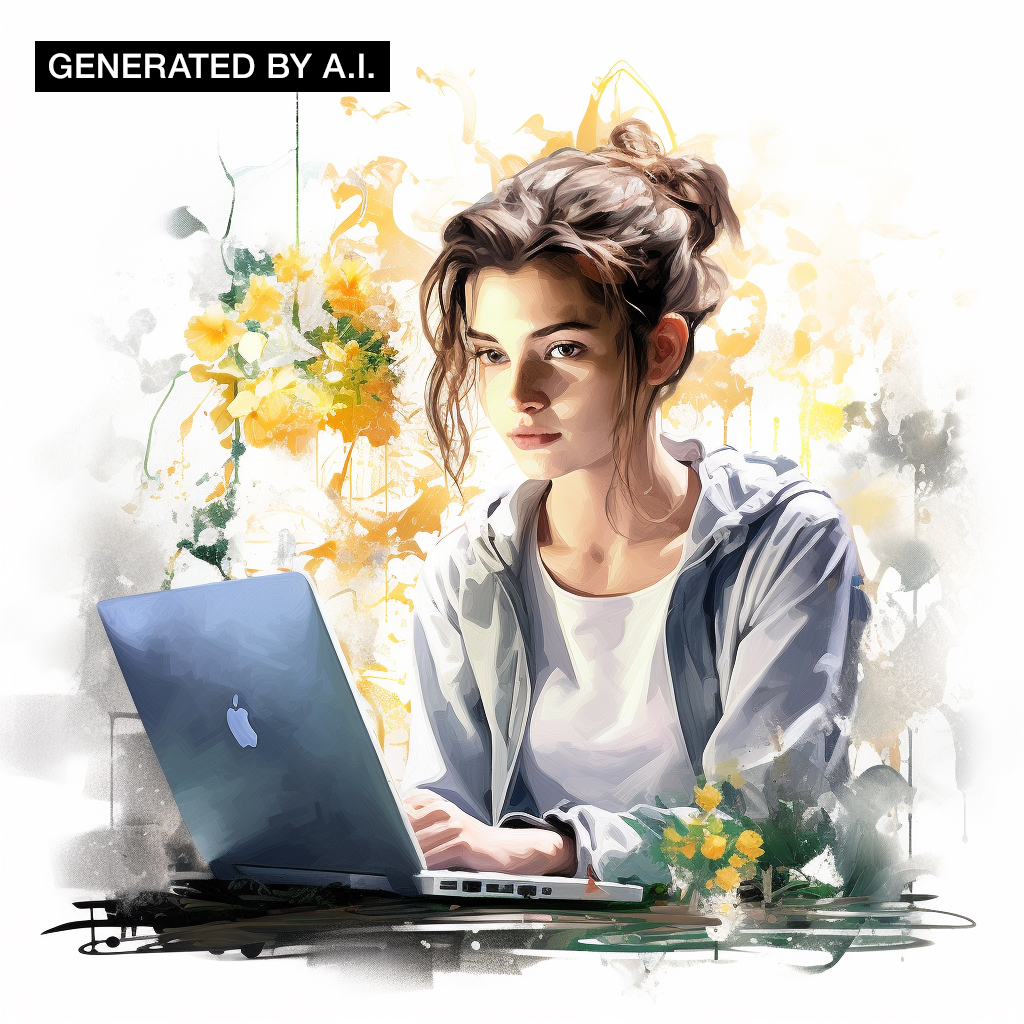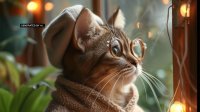Incorporating AI Art Generation in the Classroom
Artificial intelligence tools allow students who know the language of art to create and refine complex images within seconds.
Art, through the ages, has captured the human experience. Whether it was the Franco-Cantabrian cave paintings in France and Spain, the painted limestone bust of Queen Nefertiti, or the Mogao Caves in China full of elegant Buddhist statues, we see the history of humankind throughout the world in the unique art that humans have created.
As times have changed, artists have changed their tools as well. Today, the ability to digitize and share art worldwide has created a surge of digital art. This digitization led to the creation of massive data sets, which were then used to train powerful algorithms we now call diffusion models. As the newest tool for art creation, artificial intelligence (AI) art generation tools are here.
Perhaps the first world-famous artisan, but now, in some ways, a prophet, Michelangelo said, “A man paints with his brains and not with his hands.” In the age of generative art as a tool, Michelangelo was right.
Digital art creators can now type in words or upload pictures and have generative AI art tools create some pretty fantastic artwork.
Whether people are using Midjourney, Dall-E built right into ChatGPT, and Microsoft Copilot, or the generative features in Canva, Adobe Firefly, or Adobe Photoshop, powerful art-creation tools are available to our students and teachers, many for free.
AI Art Vocabulary
Through generative AI art, words have become a new tool for artists. Consequently, like the artist’s paintbrushes, palettes, canvas, clay, or any tool used by artists throughout history, there are methods for producing visually pleasing works of art that can be taught.
Suddenly, people who know the language of art are thrust into a world of opportunity where they can speak art into existence.
The best way to explain the importance of empowering our students with a descriptive vocabulary for art is by considering how we talk to our home smart speakers. There is a big difference between a person asking for “guitar music” and someone asking for “Spanish guitar in the style of Govi.” Similarly, the more we learn about art, the more possibilities we have to generate powerful art-generation prompts for the messages we’re trying to communicate.
However, human supervision is required. You might want a photo of an eagle flying, but AI doesn’t really know what it looks like; it can only detect patterns from its training data. This is why most generative AI tools produce several possible options for your consideration, and you can select one and refine it further.

We have to be very cautious about using words like beautiful, pretty, or ugly, as those words are subjective. Using a subjective word like this would be like going to a coffee shop and ordering a “delicious” cup of coffee. Since everyone has a different opinion about what makes the perfect cup of joe, we each have to be specific when we order.
AI art creators also have to be aware of bias in the data sets used by various AI art diffusion models.
For example, as has already been seen, if more subjects of one race are in a data set, the art outcomes from that dataset are biased by the overrepresentation of one race and the underrepresentation of others. Therefore, any person using AI of any kind should be willing and able to provide feedback into the AI creation system when bias is noticed. I teach my middle and high school students that the ability to report bias is an essential responsibility of the users of AI, and I always make sure my students know how to do so.
Necessary Art Knowledge
The knowledge of art is more important than ever before as these tools become widely available. The types of meaningful knowledge include the following:
- Locations of art creation and periods in history
- Well-known artists
- Well-known artifacts from periods in history
- Styles of art
- Mediums (sculpture, painting, photography, etc.)
- Additionally, shapes, descriptions, colors, textures, and patterns are all part of an effective prompt to generate AI artwork.
When you build with AI art, you typically choose a diffusion model, a generative AI method used to generate near-infinite artwork from text-based prompts. Dream Studio, Dall-E, Midjourney Stable Diffusion, and CF Spark are all different diffusion models. (Note that the different diffusion models can have similar-sounding names but different features.)
Some prompt-building tools have arisen to help people learn how to prompt in those systems. As AI models mature, we will have easier ways of generating the images we want to create.
One of the most useful ways to learn about AI art generation is to find sample prompts for the diffusion model you will use. You might have to research to find out the model your specific website is using, but after you do, you can begin exploring prompts and creations. You might also keep a notebook of prompts for use in your classes. I’m keeping prompts I use with students in my lesson plans and posting them to assignments.
Caution
We must monitor the creation of AI artwork, as students’ imaginations can be interesting. Wisdom is in order when combined with the sometimes unpredictable nature of some art-creation tools.
While I’ve used Midjourney personally, the way art is created in Midjourney using public Discord servers means I do not recommend this tool for K–12 schools right now. These servers are places where I don’t want my students to “hang out.”
Is this cheapening art?
While some artists may feel threatened in many ways by AI art generation, true handcrafted art may become more appreciated and valued than ever before because more people will become educated about art. Certainly, we must remember copyright issues and respect for artists themselves, as some data sets have been accused of using artists’ copyrighted work without permission.
In the end, AI art generation puts the knowledge of art front and center as vital knowledge for today’s savvy creators and digital craftspeople worldwide. In a world of AI art creation, art knowledge is a vital need for our students as they continue our legacy of capturing the human experience with new tools.
